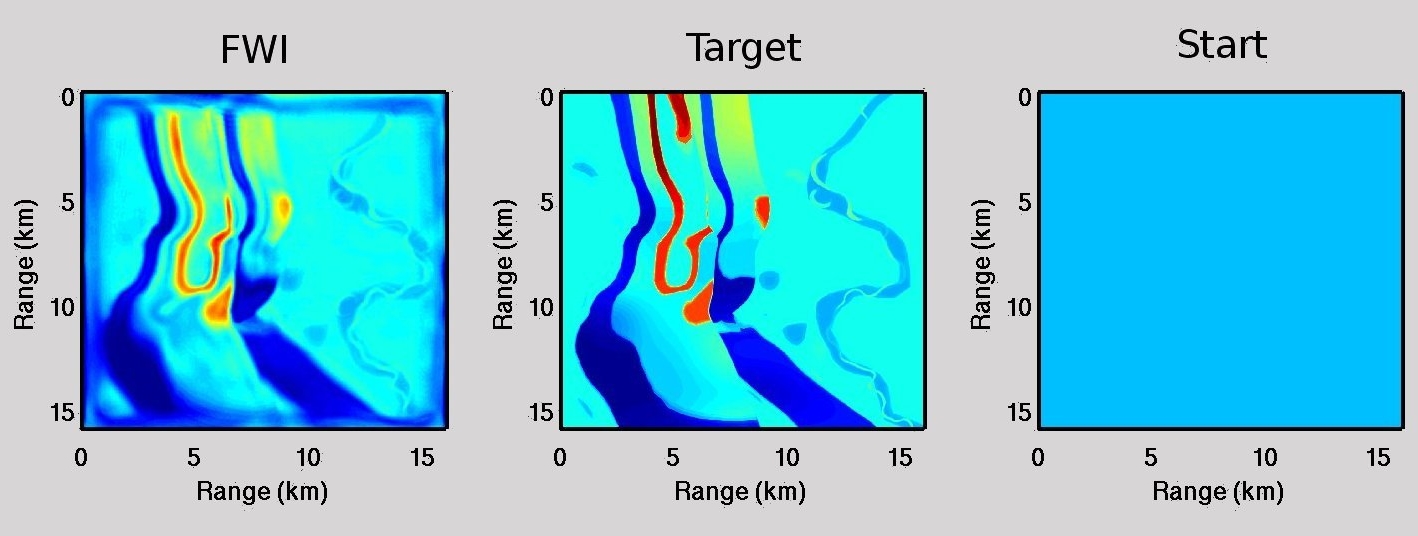
Inverse modelling gives answers to the question: What are the physical properties of the Earth? By matching recorded data with the outcome of large and complex 3D simulations we obtain accurate maps of the properties of the subsurface.
Summary
The retrieval of physical properties of the Earth’s interior using seismic data has always been challenging for both academy and industry. As such it has been subject to intensive research for the last decades. In parallel, because of the increase of computational power, complex forward modelling have become more affordable. One of the methods that potentially allows to extract more information from seismic data is Full Waveform Inversion (FWI). Theoretically, it can provide models of physical parameters with a higher spatial resolution than other methods such as travel-time tomography.
FWI is commonly formulated as an iterative process that seeks to improve the model by minimizing the differences between the synthetic traces obtained using a reference model (which can be poor in high-frequency content) with the real seismic trace recorded experimentally, hereafter referred to as “data”, by means of a cost functional. Nevertheless, and given the number of parameters to be inverted, statistical methods such as Monte-Carlo are still not applicable for large 3D problems. In this sense the center piece of FWI is the so-called adjoint method, which allows us to obtain the gradient of the misfit function for the current model by cross-correlating both incident and back-propagated wavefield (Tarantola,1984).
Objectives
- Develop advanced acoustic and elastic 3D FWI algorithms for geophysical exploration.
- Adaptive model selection.
- Simultanous multi-parameter inversion (e.g. shear and compressional velocity, density...)
- Novel misfit functions which are more robust than classical ones.

